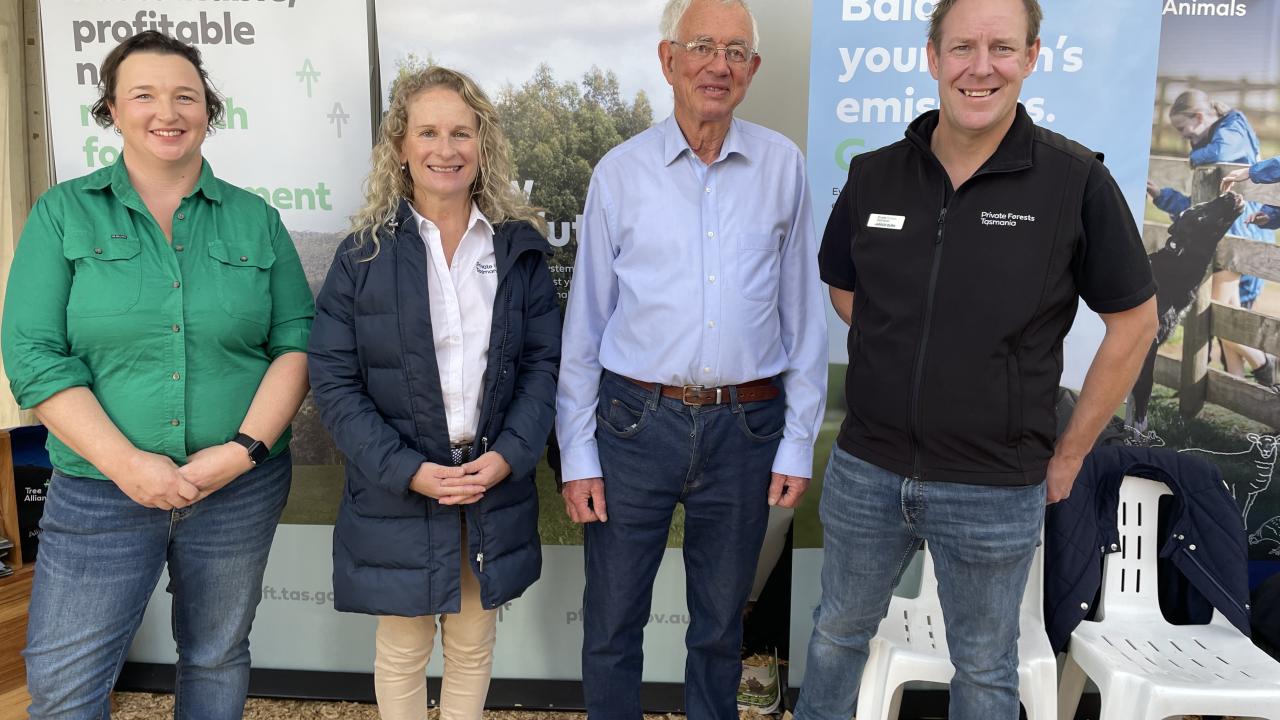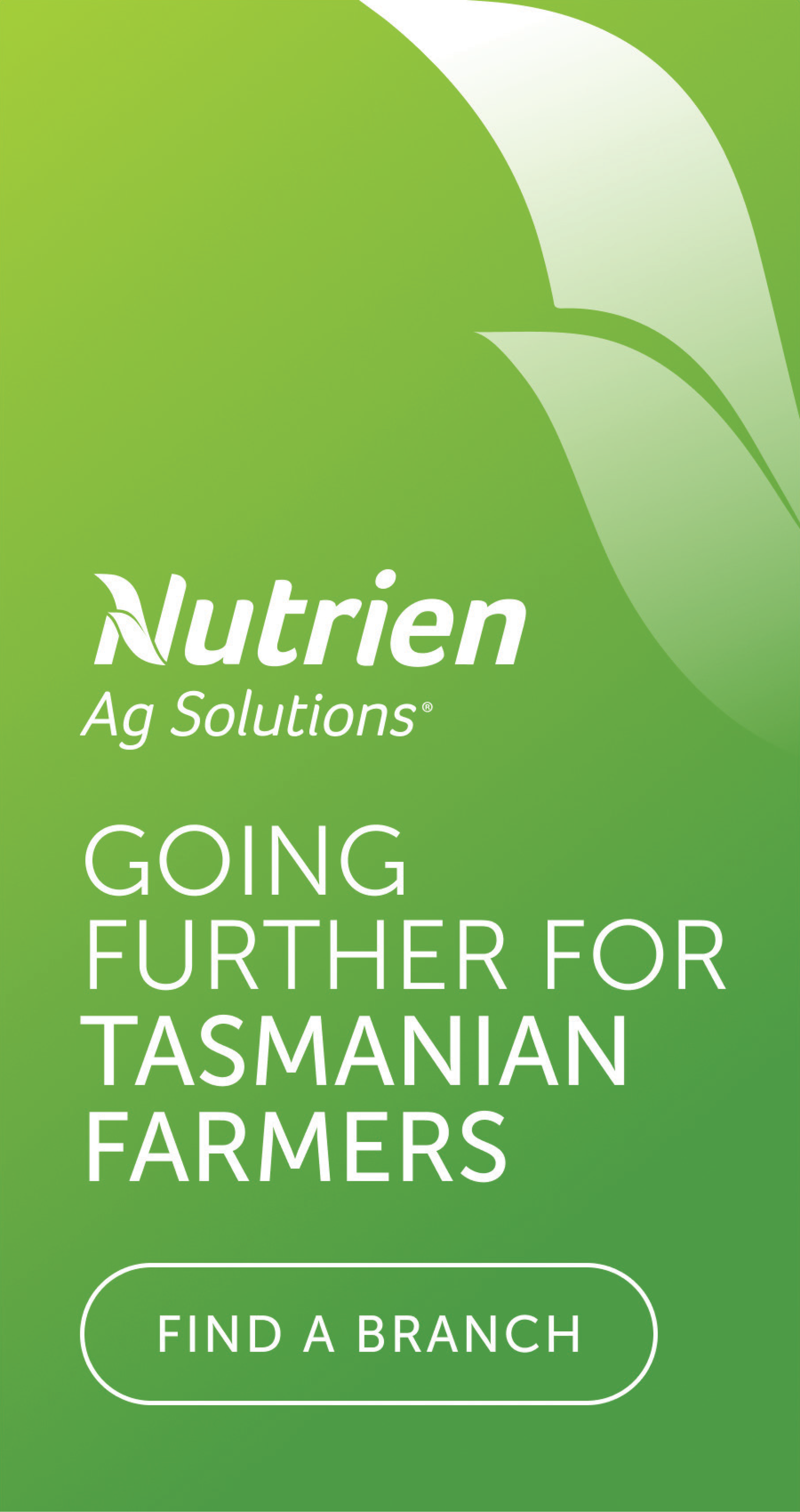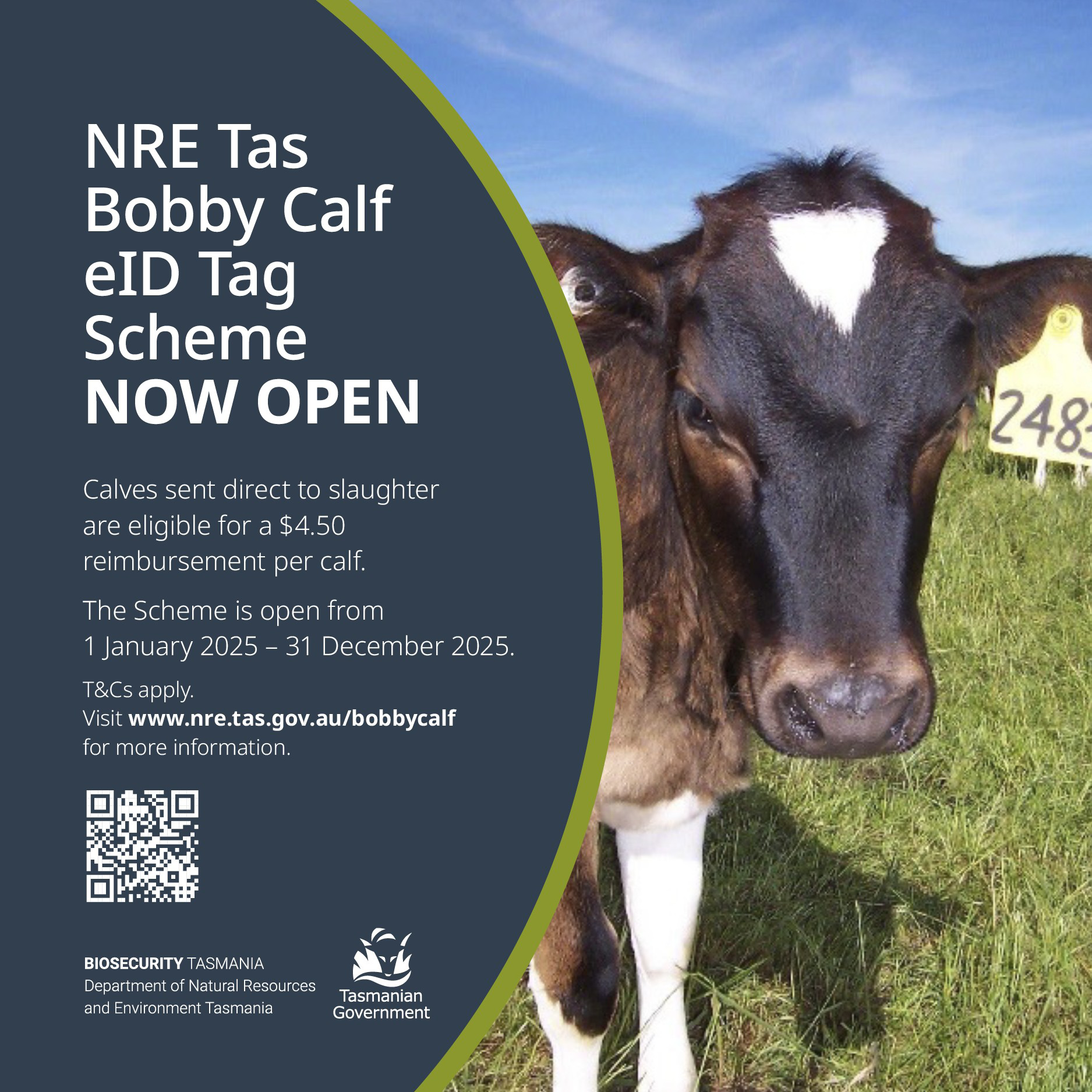'Keep your mitts off': TasFarmers call on private forests

Agfest has been used as an opportunity for farmers to be told about the benefits of having forestry operations on their land.
Organised by TasFarmers, Private Forests Tasmania (PFT) representatives and farmers with forestry operations on their land spoke to the public on day one of Agfest about doing forestry on private land.
Around 70 per cent of all forest products harvested in Tasmania come from private land.
TasFarmers President Ian Sauer said the event was intended to inform its members about how private forestry operations work and the opportunities in the space for land owners.
“There’s a whole heap of farmers – and TasFarmers members who have got plantation shelterbelts and their own native forest,” Mr Sauer said.
“The farming community have been locked in trying to get that triple bottom line measure on their land so it’s economic, social and environmental, and trees do that.”
Mr Sauer acknowledged that forestry had been a contentious issue.
“The problem – I think – is that there has been a lot of negativity in the community through misinformation for quite some time about native forests.
“So TasFarmers' policy is we don’t necessarily care that much about what happens on public native forests.
“However, when it comes to private native forests and private land, keep your mitts off it and allow us to get on and do business.
Mr Sauer said that TasFarmers, PFT and others were not looking at forestry through “the old lens,” which included wood chips and clear felling.
“We are now in 2025, we want to look at it through a new lens, and we want to be able to maximise social, economic and environmental issues.
“So, how do you do that?
“The thinking that we are talking about at the moment is high-value and laminated timbers.”
The new St Lukes building in Launceston is an example of that, Mr Sauer said.
“One of the main benefits is that it stores carbon for 200 years, so that’s just one little thing; we should be moving down that pathway.”
Mr Sauer also said that landowners not managing their forests would see them degrade and slowly die over time.
“You keep weeds out of them, you need to burn them – the Aborigines were doing that for millennia.
“We want to keep that bush safe, so we don’t want a catastrophic fire through there.
Burning also enables biodiversity, Mr Sauer said, particularly in Tasmanian dry sclerophyll forests.
“One of the ways to germinate seed in these forests is through smoke and fire, so we need to have new growth.
“When that new growth comes forward, you get a huge increase in carbon uptake.”
Mr Sauer said there needed to be more focus on the future of forestry.
“We need to be looking forward, not worrying about what happened in the past. Farmers manage their land very, very well.
“They’re providing ecosystem services to the community.”
PFT Operations Manager Jarrod Burn said his organisation’s legislative objective was to facilitate the expansion and sustainability of the private forest sector.
“We support everyone from mum and dad that have four or five hectares at the back of their property, through to the large industrial estates that manage 100,000 hectares,” Mr Burn said.
“We support them through different capacities; through advocacy, through policy, through research, and also by being that trusted source of information for all things forestry related.
“Our table talk this morning uncovered that there’s a lot of bureaucracy and challenges around the emerging market that is carbon.
“One of our key priority projects is to break down those barriers and be that trusted source of information so that people can make informed and confident decisions in investing in carbon and forestry.”




Add new comment